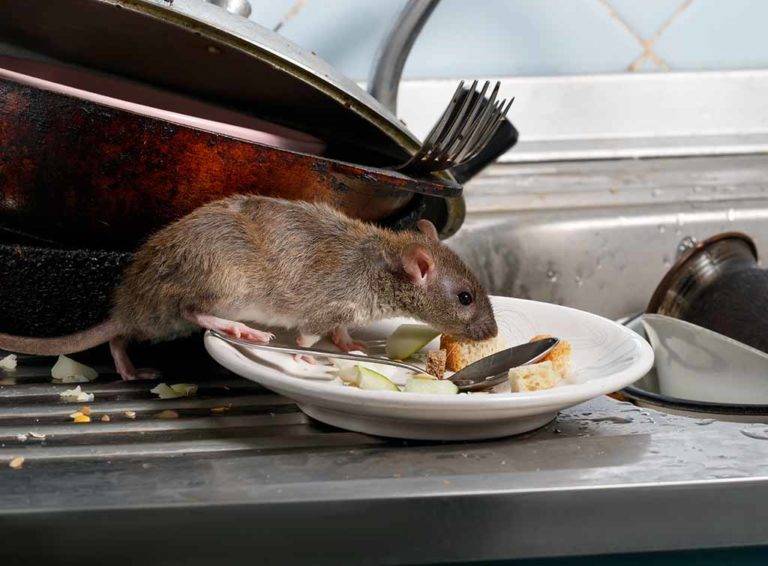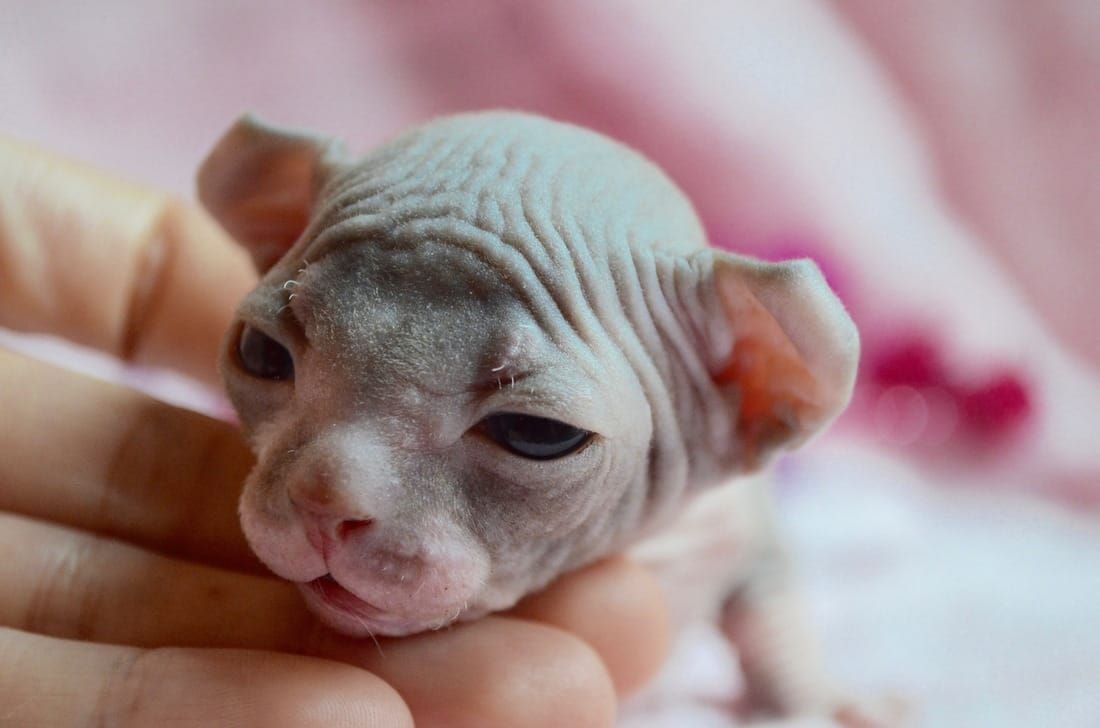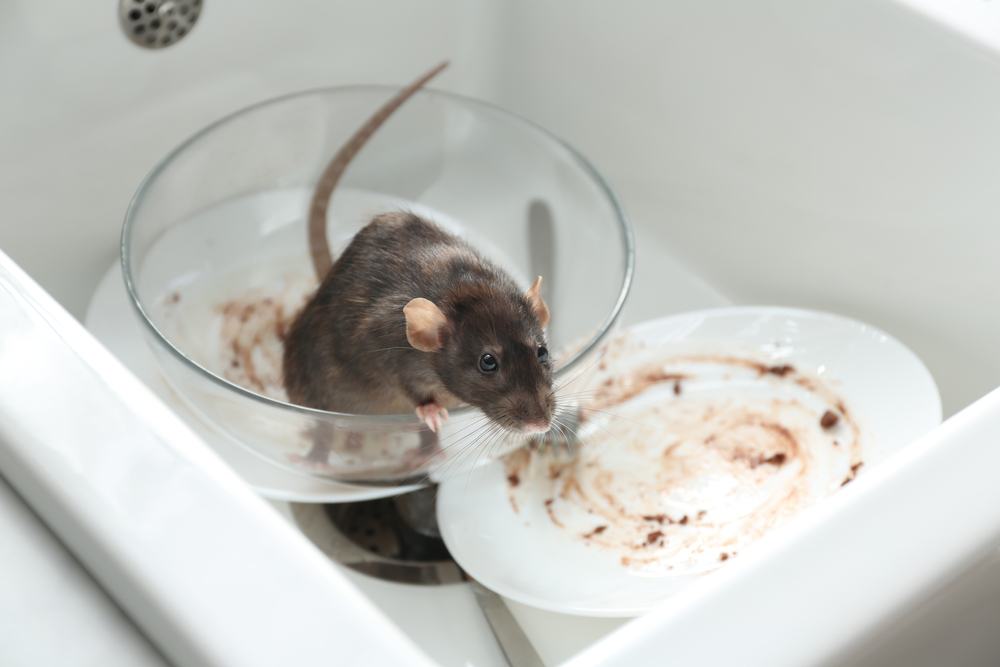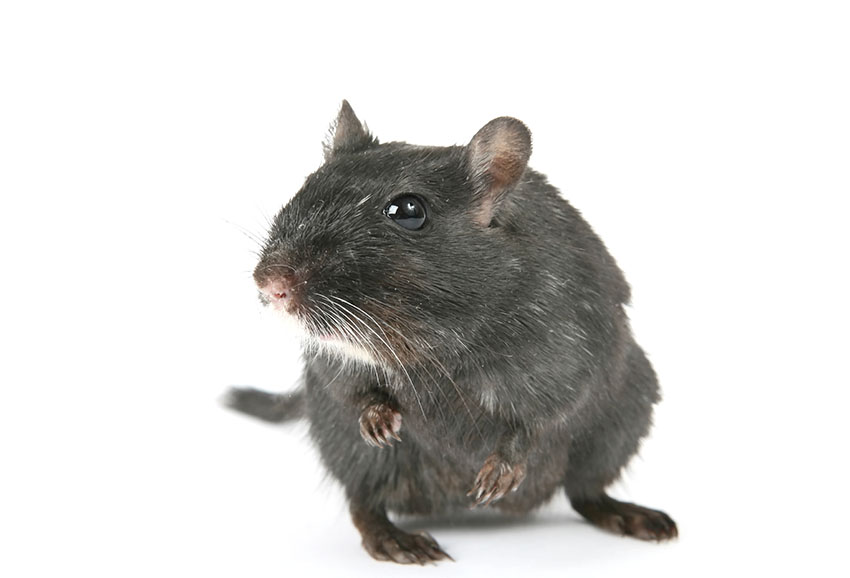Both hairless rats and fancy rats require a bedding material in their cage to run around on, dig in and sleep on. Like all small animals, both types are prone to dangerous respiratory infections and other symptoms caused by the phenols in cedar and pine shaving; never use these materials for bedding. Wood chips such as aspen, however, are all right for furry rats, but the slightly sharp edges can easily cause tiny cuts on the hairless rat's smooth, unprotected body and they may also dry out his skin. Recycled newspaper bedding or other paper bedding is acceptable, as is a soft fleece blanket. Regardless of which bedding you use, clean it at least twice a week for furred rats and three or so times a week -- at least -- for hairless rats. Because of their suppressed immune systems, hairless rats are more susceptible to respiratory problems due to factors such as mold.
It is sometimes difficult to introduce new rats to each other, so it is best to purchase them at the same time from the same cage at the pet store. Rats are extremely intelligent and enjoy being handled and exploring. Male rats do not often get along well together unless they are siblings and purchased at the same time; also make sure to select a cage large enough to give them separate living spaces.
Do not keep males and females together as they reproduce readily. Rats are easily tamed, even if they are difficult at first. The more you handle and work with your pet, the tamer it will become. Any animal may bite in defense if it feels threatened, but domestic rats generally are not known to bite.
Remember to work with your pet after dusk, as it will be more willing to cooperate since it is a nocturnal animal. Place your pet's cage in a place in the home where it will be around the family, yet protected from direct light, drafts and excess noise during the day. Also be sure it is high enough to be out of reach of dog noses and small children's hands.
Rats are prey animals and can feel threatened by large bodies above them or in their faces. Most people don't know this, but rats typically live only two to three years. Also, keep in mind many rats start to develop common medical problems after even just one year of life. So if you're considering having a rat as a pet, realize that your little buddy may not be around as long as a dog or cat. You can make the best of it, though, by making sure your pet rodent gets optimal care, including regular veterinary attention .
Good everyday care for your pet rat would include things like having its bedding spot-cleaned daily and completely changed weekly. Rats should be fed a base diet of pellets specifically formulated for rats, plus clean water and a small amount of table food . They also need exercise — running in smooth-sided toy wheels that can be placed in their cages and by having regular out-of-cage time as well. Keeping rats as pets can come with the stigma that rats supposedly transmit dangerous diseases to their owners.
Usually, rats bred as pets are tested and treated for diseases and parasites. Norvegicus is not among the list of species considered a threat. In 2004, an outbreak of salmonella in the United States was connected to people who owned pet rats. Both hairless rats and fancy rats make ideal companion pets and entertain their owners with their inquisitive nature, playful attitudes and willingness to hitch a ride on a shoulder. Even though they are more susceptible to illness and other problems, a hairless rat can make an ideal, friendly pet for someone willing to take the time to keep their environment clean and healthy.
Hairless rats are a coat variety characterized by varying levels of hair loss. These range from having areas of very short fur to being completely bald. Since rex is a dominant trait, there only needs to be one rex parent to produce curly rex-coated offspring. However, when two rex parents are bred, two copies of the trait may be present in the offspring. This causes varying levels of hairlessness, and has earned the colloquial name "double rex". The other type of hairless rat is sometimes referred to as a "true hairless".
This is caused by a different gene, and is distinguishable from a hairless double rex by the absence of whiskers. Unlike a double rex, this type of hairless rat is incapable of growing hairs on any part of the body. One additional subset of semi-hairless rats, patchwork rex, constantly lose their hair and regrow it in different "patches" several times throughout their life. Intelligence is difficult to quantify or define even within the same species. Usually, animals that have to range widely for food and are more selective in regard to their food sources also tend to show higher intelligence . These animals need to invest more into memory to remember where the last meal was than, for example, ruminants such as cows and goats which eat nearly any type of plant.
Thus, we would expect intelligent animals to be, generally, those species that have wider ranges. Thus, we would expect naked mole-rats to exhibit a suite of complex cognitive abilities. As a coarse indicator of cranial capacity, it is generally not a good measure of species' cognitive abilities.
Similarly, birds, despite numerous markers of intelligence, tend to have small brains for their body size. The underlying reason is because birds need to fly and thus, their brains are structured differently from mammalian brains with more nerve cells and fewer supporting cells per gram of brain. In fact, corvids and some parrots have the same or greater forebrain counts of neurons as primates with much larger brains . It also has a lower neocortex/brain ratio and less neurons than predicted for its body size .
Based upon these criteria, we would not consider naked mole-rats as particularly intelligent animals. Rats can reach sexual maturity from as early as five to six weeks and are very easy to breed. Average litter size is quite large, between 6 and 18 kittens and pregnancy will only last days. It is best to take the males out of the cage once the female has delivered her kittens as they are very quick to breed again.
The young are born hairless, with eyes and ears closed and can be handled, however the mother may be a bit nippy on occasions. Females and males are easily identified and if you are buying a doe from a pet shop, assume that she is pregnant. To care for a hairless rat, prepare a cage with at least 2 square feet of floor space, and line it with paper bedding or newspaper.
Make sure to clean the bedding 3 times a week, since hairless rats are prone to respiratory infections caused by dirty cages. Additionally, provide your rat with a lab block to eat, which will give it all the vitamins and minerals it needs to be healthy. You can also offer it fruits and vegetables, like strawberries or carrots, once a day to give it something fresh to eat.
Naked mole rats are famously wrinkled rodents, native to East African deserts. They live in colonies underground, headed by a queen who does all the breeding, by mating with just a few males at any given time. They can live without oxygen for up to 18 minutes without ill effect, by switching over to metabolizing fructose instead of the more usual glucose. Their sperm is of "dismal" quality, according to one researcher, yet they are still perfectly fertile.
And they live bizarrely long, over 30 years in captivity and up to 17 years in the wild. Based on their size, naked mole rats should live about 6 years in cushy conditions, just like lab mice. Now, it seems their lack of normal aging might help explain their longevity. If you are new to hairless rats, you might notice that your hairless rat feels much warmer, or even hot, as compared to your furry ratties.
This is because hairless rats have to maintain a higher body temperature in order to stay warm, as they have no fur. They feel like little heaters, and it can be worrisome for a new owner. Just know that a hairless rat is supposed to feel like it is hot. This is completely normal for a hairless whether it is a true hairless or a double rex hairless. Both of them must be able to compensate for the lack of fur.
Hairless rats, or Sphynx rats, are a very special type of bald pet rat. Owners across the world love hairless ratties, as they don't produce shedded fur like most other rats, and are particularly favorable for people who have allergies to pets. They are very unique, and may have slight traces of hair or fuzz, depending upon the genetics that they have and the type of hairless rat they are.
Domesticated rats have a longer lifespan than that of wild rats. Because domesticated rats are protected from predators and have ready access to food, water, shelter, and medical care, their average lifespan is around two to three years, in contrast to wild R. Norvegicus which average a lifespan of less than one year. However, wild rats generally have larger brains, hearts, livers, kidneys, and adrenal glands than laboratory rats. Fancy rats were originally targets for blood sport in 18th- and 19th-century Europe.
Later bred as pets, they now come in a wide variety of coat colors and patterns, and are bred and raised by several rat enthusiast groups around the world. Fancy rats are generally easy to care for provided plenty of research is done and are quite affordable, even compared to other small pets; this is one of their biggest draws. Additionally, they are quite independent, loyal and easily trained. They are considered more intelligent than other domesticated rodents. For more budget-minded pet rat owners, there are some things you can do to bring down the costs a fair bit.
Firstly, the most obvious step would be to only own 2 or 3 rats and make sure they do not breed or fight, so purchase only males or females. Adoption is also a cheaper option than buying rats from a breeder, and you may even be able to get some pet rats for free. Generally when two or more rats from the same litter are of the same sex, they live together with no disruptions but with the occasional friendly tussle and play fight. This process can vary in difficulty, often measures have to be taken to provide security for both rats. Techniques for integration include bringing them to neutral ground so they do not become territorial.The process of integrating is easiest with two rats of young age, generally less than six months old. The process of integrating is most difficult with two or more adult male rats, as adult males are the least likely to accept new cage mates, especially after an alpha has been established.
Unless there is an issue integrating rats together, owners should always keep them in a group of at least three, as rats live in packs and a pack starts with three animals. I own a hairless rat that I got from a pet store about 1.5 years ago. She was a breeder that was eating all of her babies and they were going to feed her to a snake until I saved her. Her right eye was blind since I got her but it's been changing lately.
The options offered to me are eye removal or an injection that kills the nerve to the eye, making it shrivel up . I don't know which option is better for me considering we still don't know what caused this, I don't know her age, and I make next to no money. I bought pain meds for her but I cannot get her to take it for the life of me. She doesn't appear to be in much pain except with rats it's hard to tell and I'm worried her head may be hurting.
Also she has been messing with the eye (I think she may be trying to groom herself and it's getting in the way or it could be bothering her-I can't tell). I feel like the more I mess with her, the worse she feels. Rats are social creatures, preferring the company of at least one other rat over being alone.
Two females make ideal pairs, as do two males from the same litter. Hairless rats, because of their lack of fur, do well when housed with a furry rat. When they snuggle, the hairless rat gets to cuddle into the fur of his cage mate.
Rats of both types like small boxes to sleep in, as well as hammocks or pieces of soft fabric such as an old T-shirt. If you have hairless rats, one of these items is almost necessary to help keep them warm. Hairless rats are prone to small scratches from their cage mates due to the lack of protective fur. A hairless rat is cute, even when it is a little chubby, but its health is at stake.
Check at the local pet food supply store to choose the best food for your rat. A lab block may provide the pet the vitamins and nutrients necessary to keep him healthy. A hairless rat may cost anywhere between $25 – $50, depending on where you adopt it. Pet stores that sell small animals may have hairless rats for sale, but if you want to minimize the potential for health issues, you may consider going to a reputable breeder instead. Rats are intelligent, affectionate creatures that make great pets for people who want an exotic companion.
For those who want an even more unusual pet, hairless rats are perfect. They have many of the same personality traits and care requirements as furred rats. But hairless rats do differ from furry rats in a few distinct ways. If you want to adopt a hairless rat, check out this guide to ensure you're ready to take on the responsibility of adopting a hairless rat.
Naked mole rats are rodents, but they live in communities like those of many insects. Several dozen rats live together in colonies led by one dominant rat—the queen. As in some insect species, the queen is the only naked mole rat female to breed and bear young. Behaviorally, domesticated pet rats are tamer than those in the wild. They are more comfortable around humans and known to seek out their owners while roaming freely.
They have decreased reactions to light and sound, are less cautious of new food, and have better tolerance to overcrowding. Domesticated rats are shown to mate earlier, more readily, and for a longer period of time over their lifespan. These behavioral traits are thought to be products of environment as opposed to genetics. As with most small pets, it is best to keep two pets of the same gender and similar age together.























No comments:
Post a Comment
Note: Only a member of this blog may post a comment.